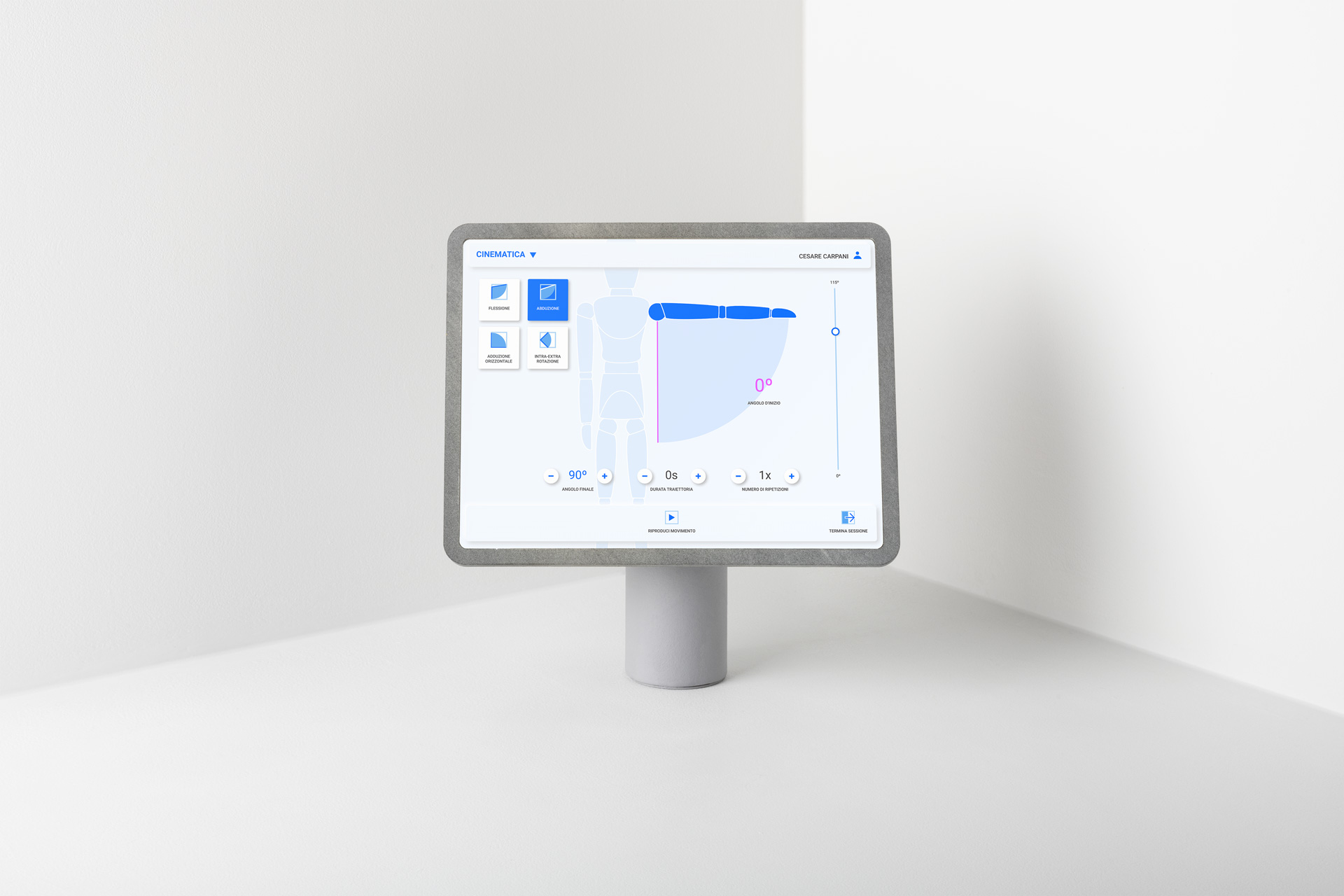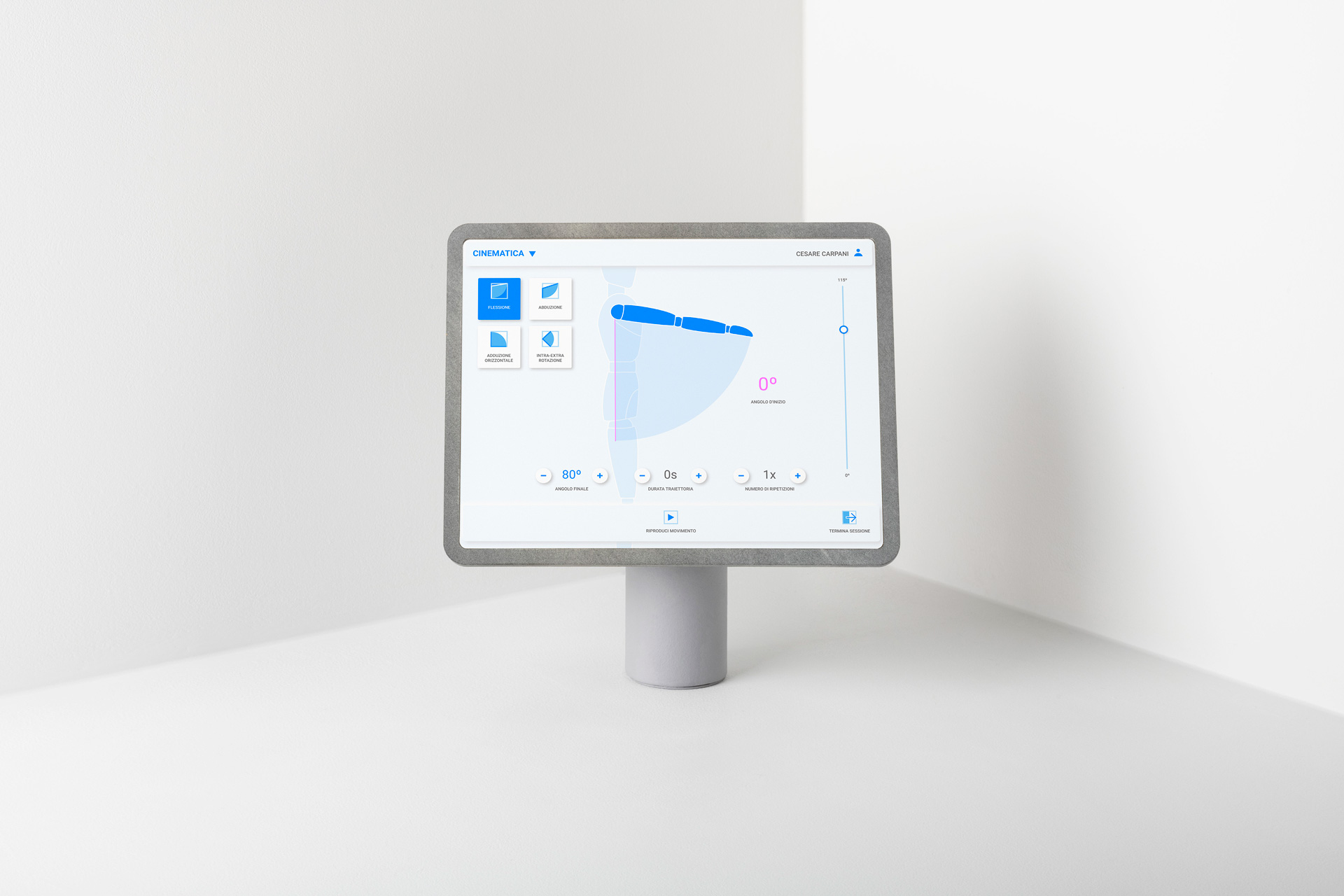There are many areas where technology can make a difference, and the medical field is the one we are most passionate about. Here a technological solution can help overcome human limitations and provide adequate care for patients. For example, physiotherapists use exoskeletons to guarantee precision and caution in executing rehabilitation movements in physiotherapy rehabilitation. The complexity of execution is such that unprecise outcomes are likely to occur and slow down the full recovery of the patient's functions. As a result of the collaboration and research protocol between the Italian Institute of Technology (IIT) and the Inail Motor Rehabilitation Centre (CRM) in Volterra, aimed at creating complex rehabilitation machines that provide analytical data on the execution of movements for each patient, Float was born, a motorised exoskeleton designed for the rehabilitation of upper limbs. We were involved by IIT to design the control interface of Float and to improve its usability. We adopted the "Think aloud test" to bring together a selected group of physiotherapists and doctors and asked them to simulate the configuration of Float by interacting with a non-functional but very realistic prototype. We defined together with the users the ideal result for them, even before starting the software development, because we believe in a design that puts people at the centre, their expectations and needs, and brings to life tools that are effective in their helping role.



